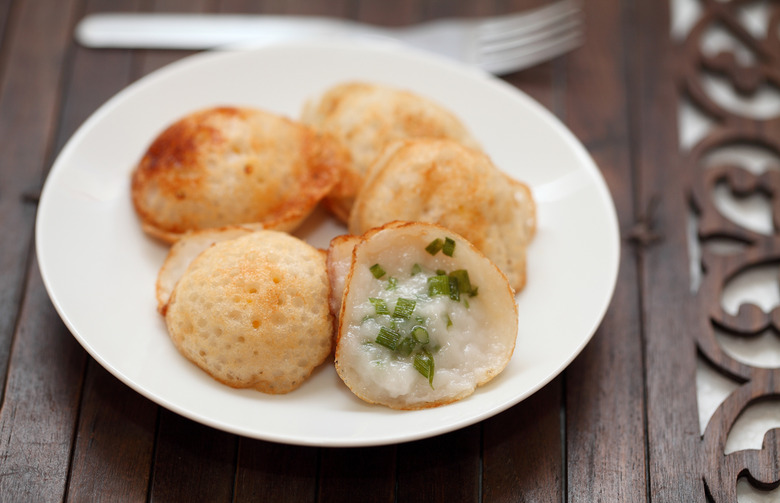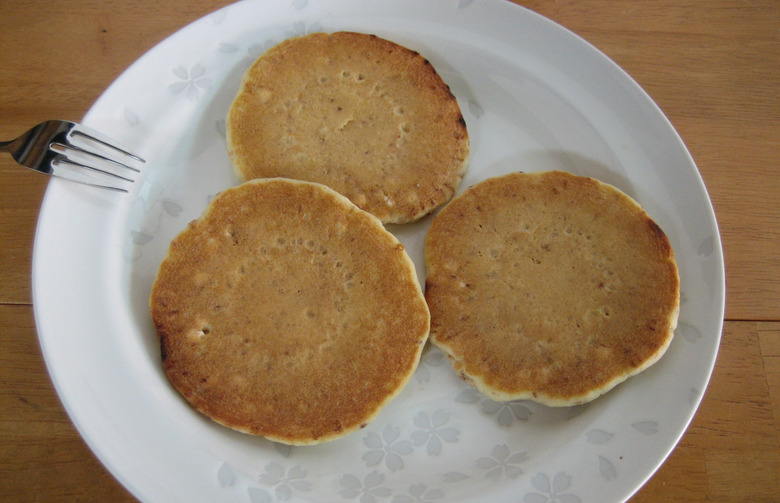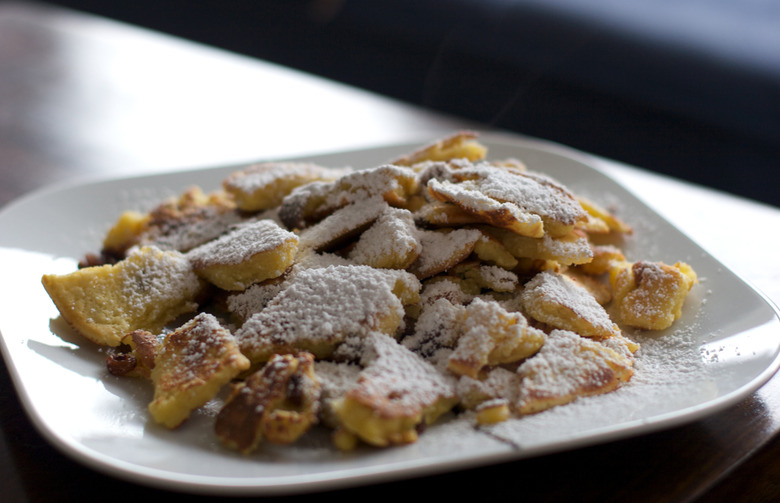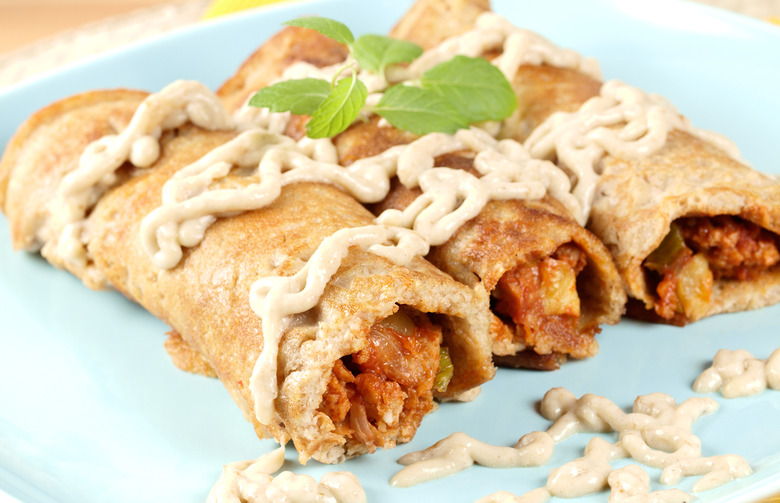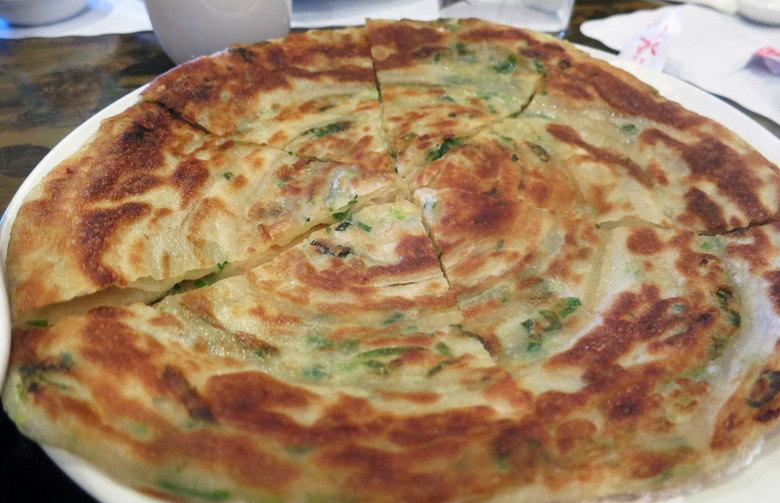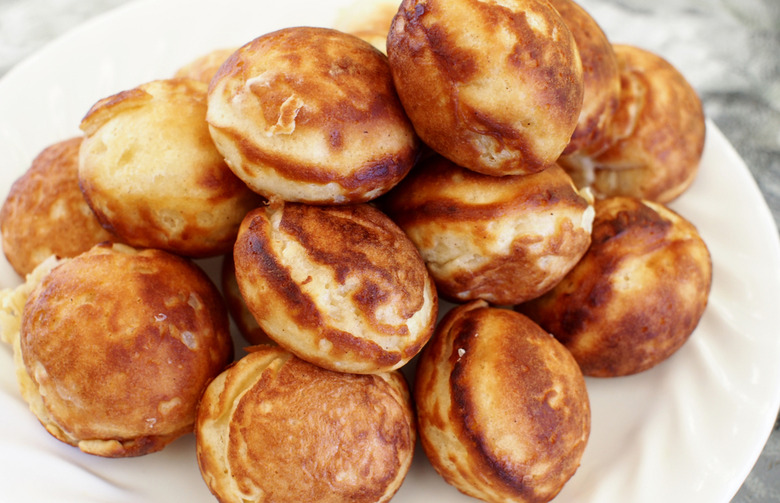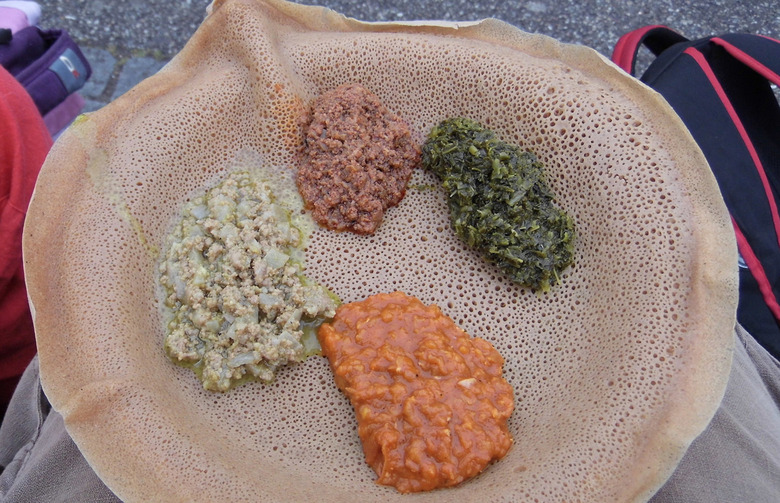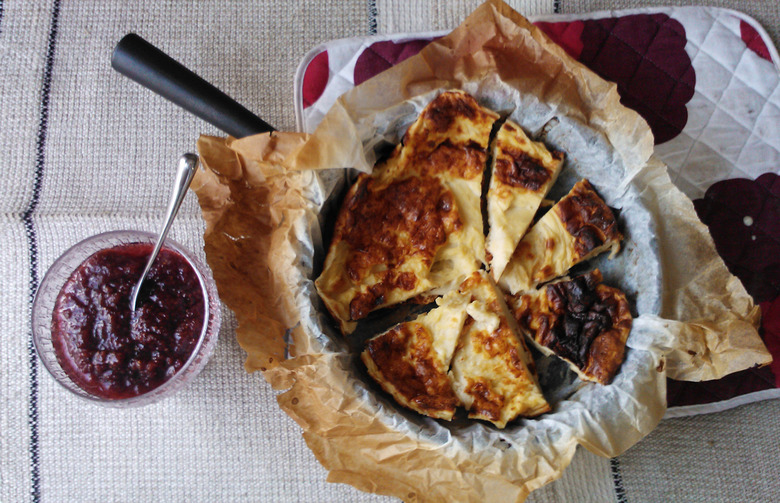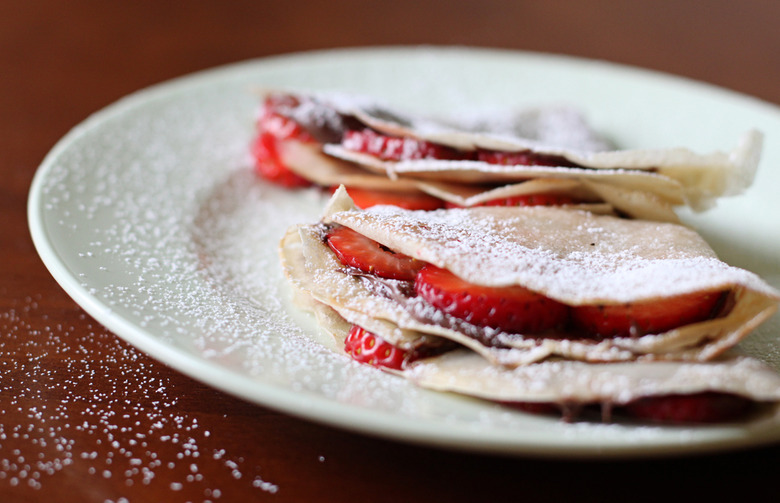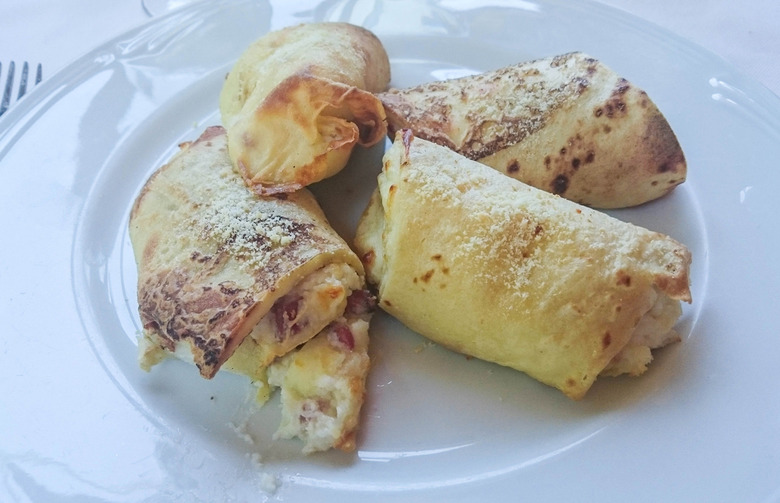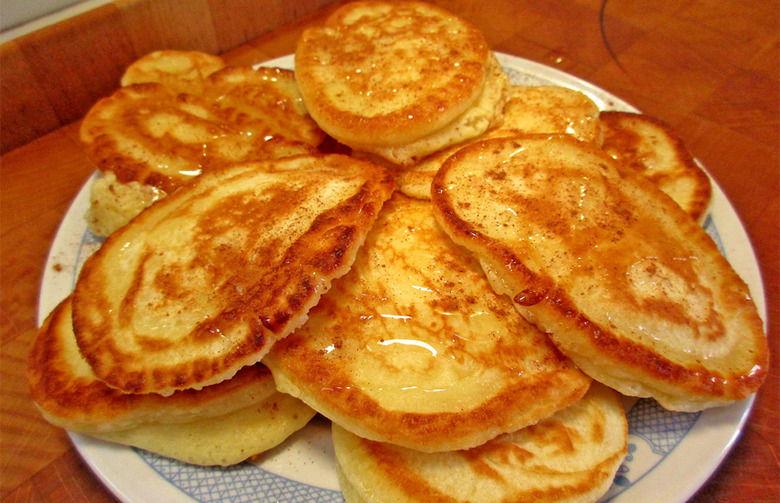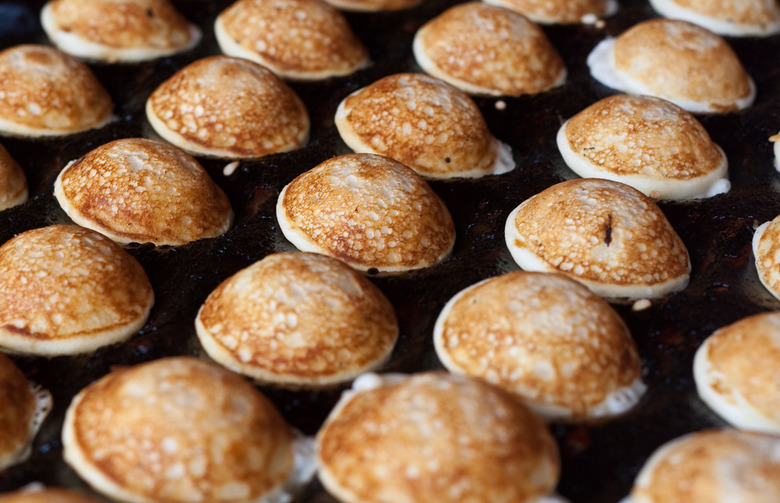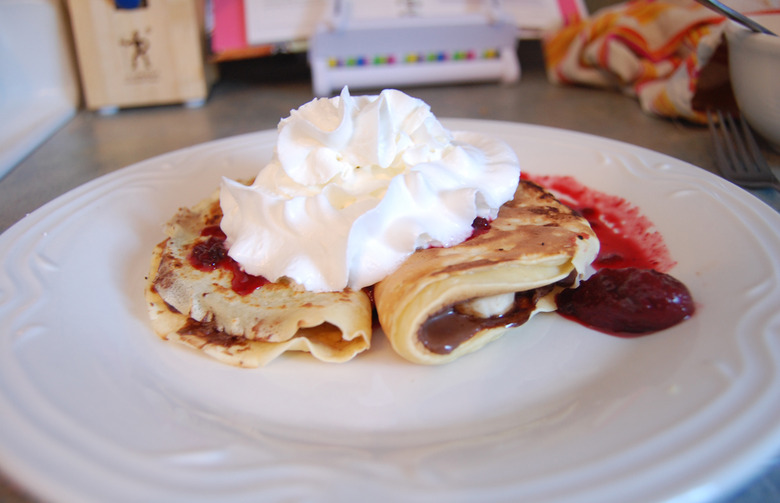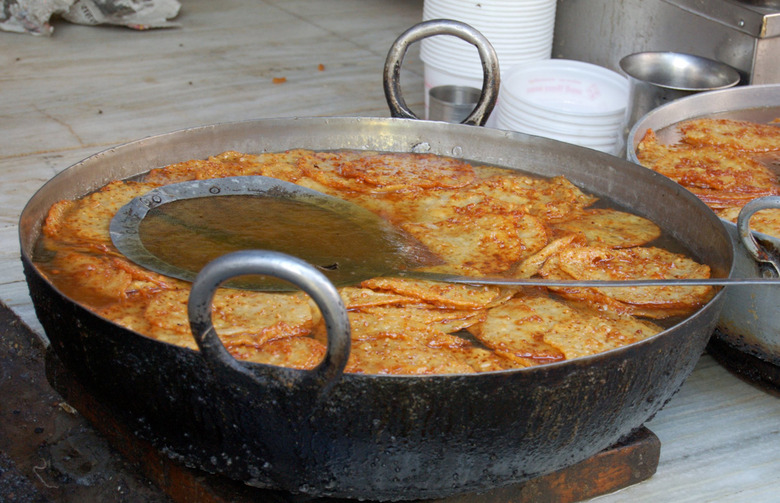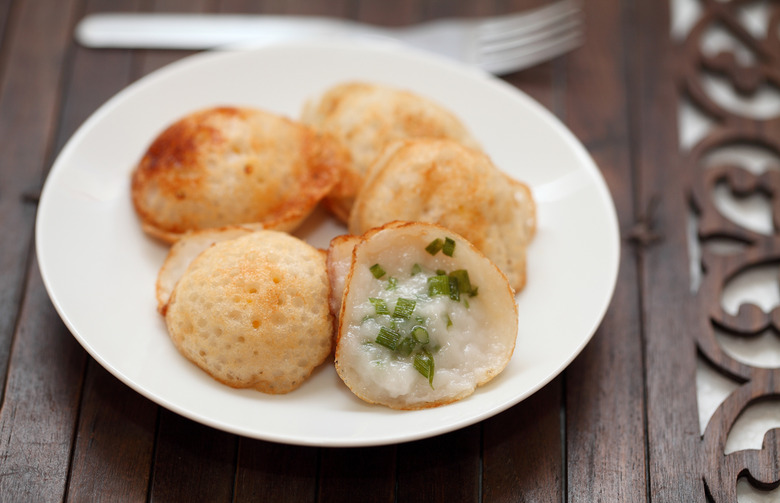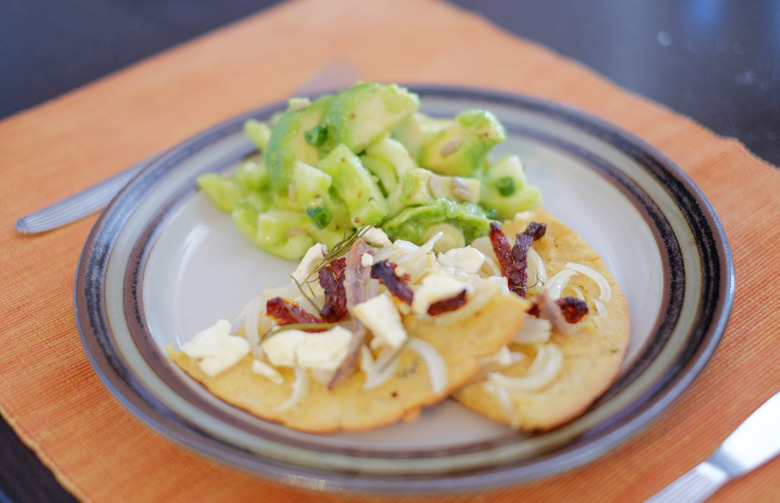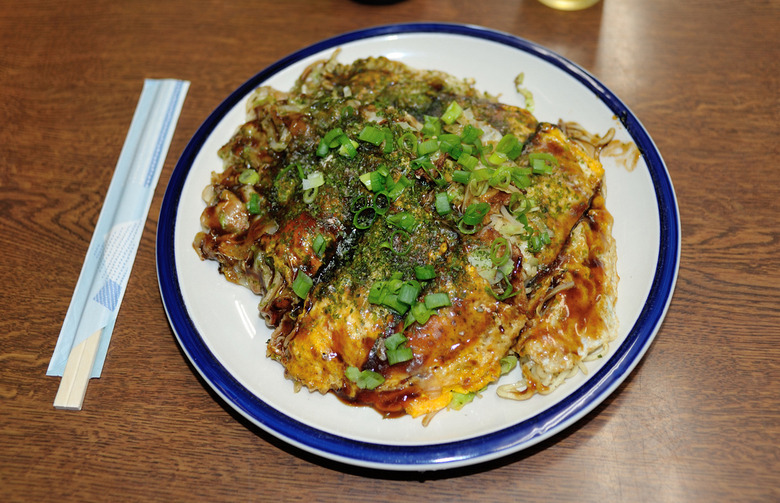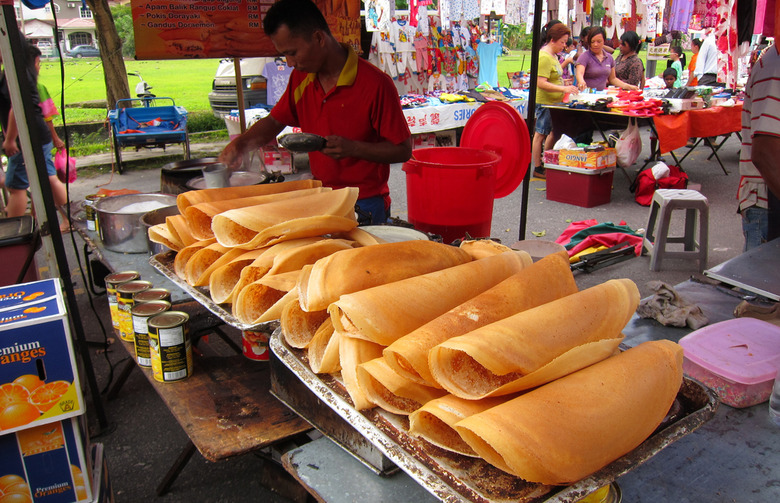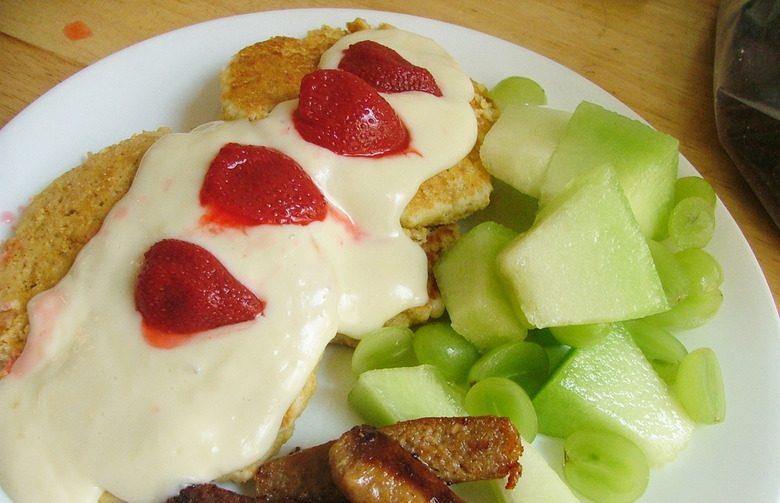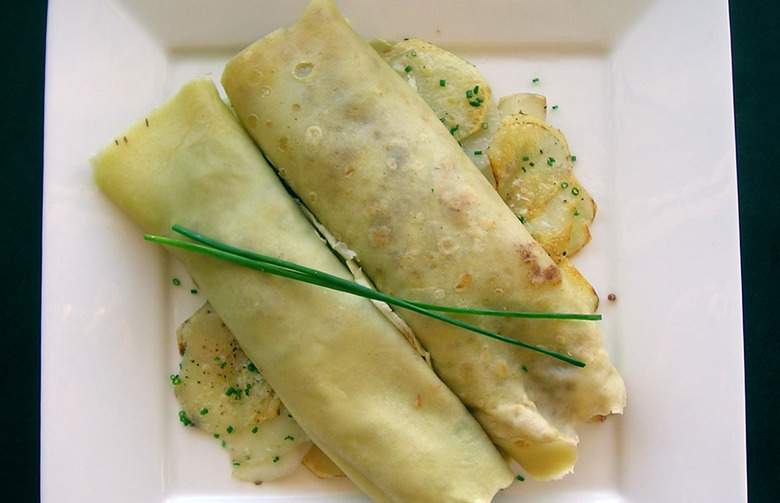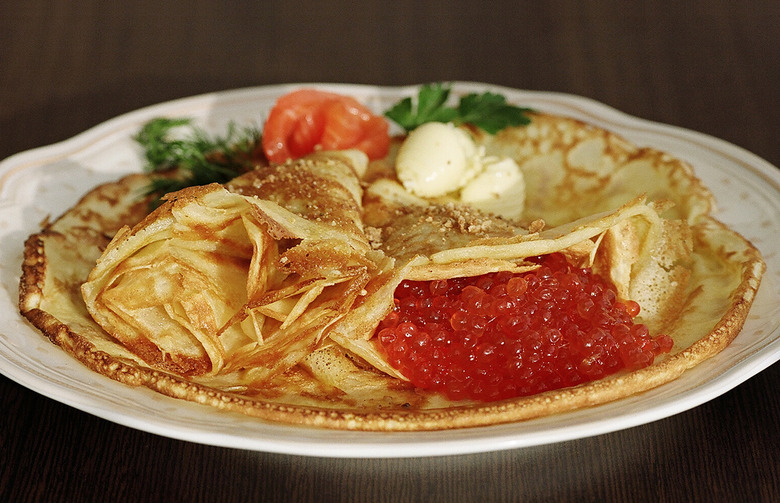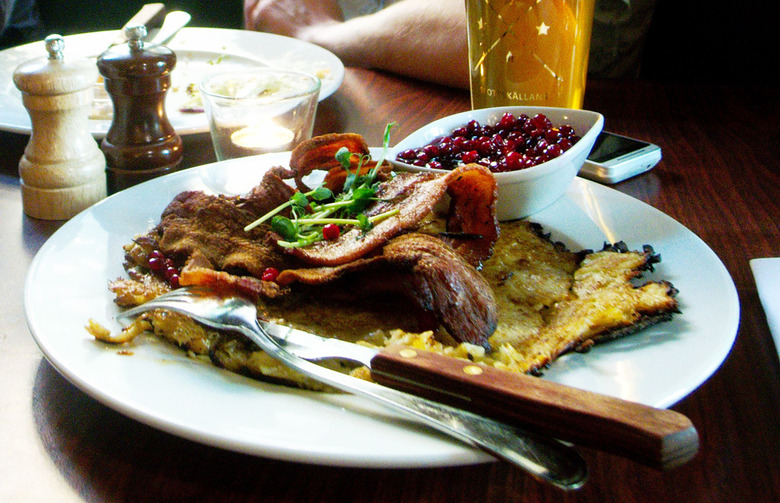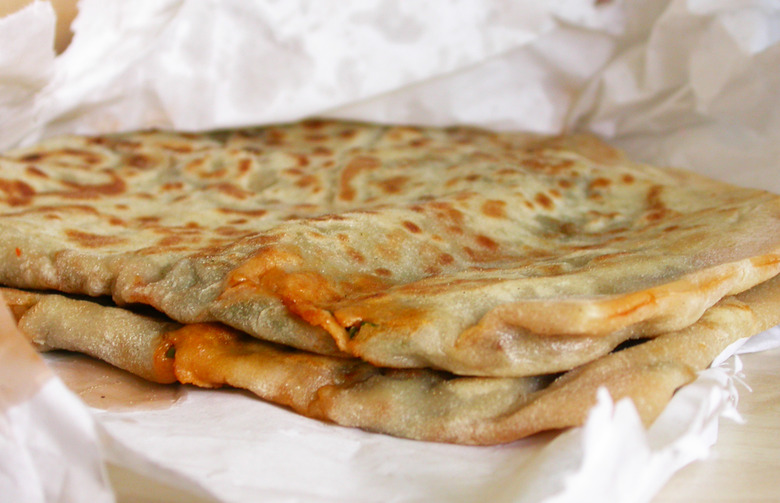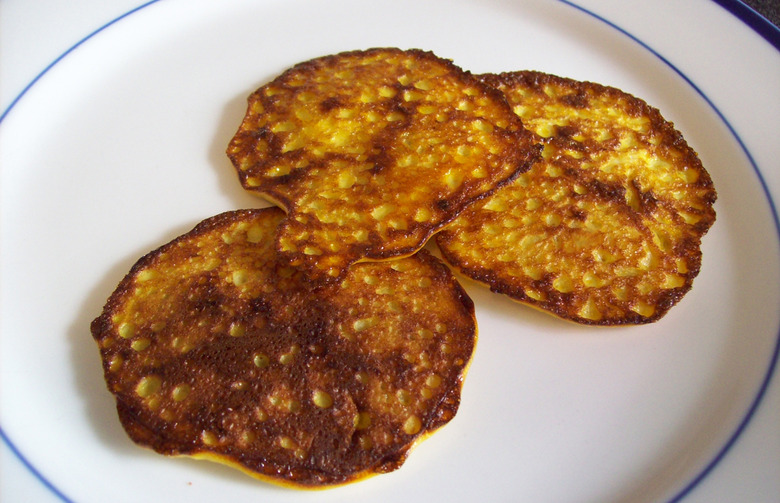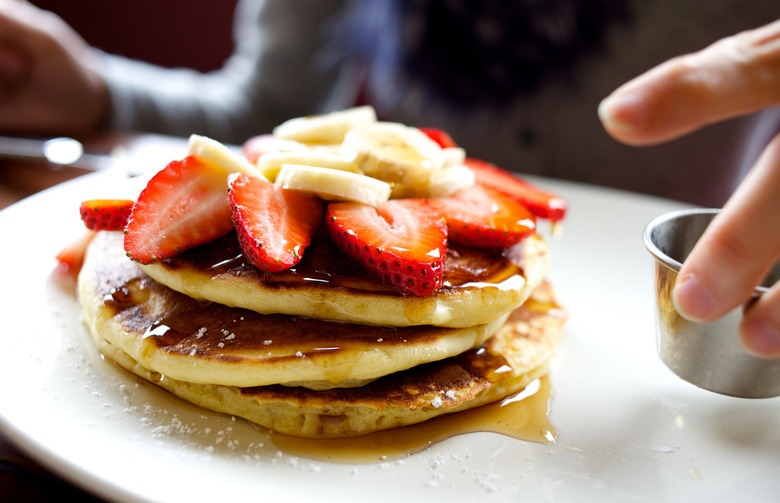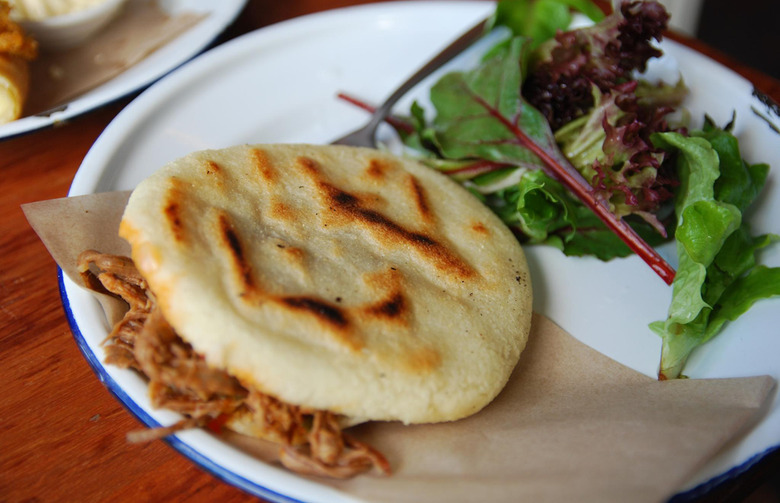25 Pancakes Around The World Slideshow
The pancake isn't a new concept or an exclusively American one. Ancient Greeks enjoyed pancakes enriched with sesame seeds and honey, and the Elizabethans added rosewater and sherry. Today, cultures all over the world have some variation on the theme. The incredible pancakes on our list vary from sea to shining sea. Some are sweet, some are savory, and some are so versatile they can be eaten at any time of day. In the spirit of National Pancake Day coming up on Sept. 26, here's a world tour through the international pancake hall of fame.
Australia: Pikelets
Austria: Kaiserschmarrn
With a nickname like "The Emperor's Trifle," you know kaiserschmarrn has to be high-quality. This classic Austrian treat is made of very thick and custardy pancakes, fried in butter, and torn into bite-sized pieces to finish the browning process. The pieces of pancake — which often incorporate raisins in the batter — are then served with fresh or preserved fruit. Some legends say the dish was first served to Emperor Franz Joseph I around the turn of the 20th century.
Brazil: Panqueca de Carne Moida
China: Scallion Pancake (Cong You Bing)
These Chinese scallion pancakes are served for breakfast with rice porridge or on the street with soy sauce for dipping. They're also cooked from dough instead of batter and incorporate fennel, bell pepper, and scallions.
Denmark: Æbleskiver
An æbleskiver is a traditional Danish pancake in the shape of a small, irregular ball. It's prepared in a special pan and molded to create the round shape. Æbleskiver, found throughout Scandinavia, are often served at Christmastime with mulled wine.
Ethiopia: Injera
This Ethiopian injera pancake is both a delicacy and utensil, because the spongy flatbread is used to scoop up stew and other foods and absorbs its meat and vegetable flavors. Injera is made from a uniquely Ethiopian grain called teff, almost completely gluten-free.
Finland: Pannukakku
These pannukakku pancakes are tender and fluffy, and Finnish hospitality often calls for them to be served to unexpected guests. Pannukakku are baked in the oven and sometimes come in a square shape — pretty revolutionary for a pancake.
France: Crêpes
French crêpes have become popular around the world. These large, thin pancakes are extremely versatile, and there are countless of variations for both the batter and the fillings. The latter may include berries, melted chocolate, or savory fillings such as ham and/or cheese. Sometimes they are simply dusted with powdered sugar.
Germany: Pfannkuchen
Germany's version of the pancake is like a slightly thicker French crêpe. Pfannkuchen are traditionally topped with sugar and rolled up or topped something sweet, like apples, or savory, like cheese. While Americans often eat pancakes for breakfast, Germans enjoy these usually for lunch or dinner.
Greece: Tiganites
With roots dating back to the sixth century B.C., Greek tiganites are still a popular breakfast throughout Greece. Made with olive oil in the batter, these pancakes are usually served drizzled with honey, cinnamon, fruits, and nuts, or topped with a soft goat's milk cheese called anthotyros. On the Island of Corfu, there is even a religious festival held annually on December 12, where traditional "tiganites tou Aghiou," or "the Saint's pancakes," are served in honor of the island's patron, Saint Spyridon.
Holland: Poffertjes
These bite-sized pancake puffs are a staple at summer festivals, national holidays, and especially during the Christmas season. These delicacies are served hot, covered with powdered sugar and melting butter.
Iceland: Pönnukaka
Icelandic crêpes are flexible in both preparation and shape — they can be folded into quarters with a jam and whipped cream filling or rolled up with sugar on top. This dish is made in a special pan and usually served with late afternoon coffee.
India: Malpua
The sweet, deep-fried malpua is common in northern and eastern India, where it's eaten especially around Holi (the festival of colors) and other special occasions. The batter for the malpua varies from region to region, but it's commonly a mix of sweetened condensed milk, flour, semolina, fennel seeds, and cardamom. The pancakes are deep-fried and dipped in a simple syrup of sugar and water.
Indonesia: Serabi
Italy: Farinata
All you need for this Italian specialty, a close relative of the socca of Nice, is chickpea flour, water, and as always, olive oil. This pancake is pan-baked, resulting in a soft inside and crispy exterior. Rosemary leaves are an optional addition for adding flavor, and farinata is usually cut into triangles to serve.
Japan: Okonomiyaki
The name of this Japanese pancake derives from the words for "to one's own liking" and "grill." Okonomiyaki is sometimes compared to pizza, and at certain restaurants in Japan, customers are given the ingredients to add to their own version — such things as shrimp, squid, pork belly, assorted vegetables, and cheese.
Malaysia: Apam Balik
There are several variations on apam balik, or Malaysian peanut pancakes. The pancake, typically sold by street vendors, is usually filled with ground roasted peanuts, sweetened dried coconut, corn, bananas, and sugar. The batter is fried on one side, the filling is added, and finally, it's folded in half.
Mexico: Hotcakes
Mexican hotcakes (yes, the English term is used south of the border) are similar in style to pancakes served in the U.S. but are more often made with cornmeal instead of, or in addition to, wheat flour. Common hotcake toppers are condensed milk, fruit jam, or a caramelized goat milk spread called cajeta.
Poland: Naleśniki
Naleśniki are the Polish version of the common Eastern European blintz, a crêpe-like pancake filled with various — often sweet — fillings. The Naleśnik z Serem, or Polish sweet cream cheese pancake, is a popular version.
Russia: Blini
These thin Russian pancakes, said to be a symbol of the sun, can be topped with sour cream or butter. If you want to get fancy, don't be afraid to add caviar. Blinis are traditionally served to welcome the spring season after a harsh winter.
Sweden: Raggmunk
Their name isn't the only unique thing about these potato pancakes — fried pork and lingonberries are usually added to the mix. Typically enjoyed as a way to combat the cold winter temperatures, these treats are crispy and buttery around the edges and perfect for fighting the snow.
Turkey: Gözleme
Really more of a quesadilla than a pancake, this crisp flatbread, which is filled to the brim with choices like spinach or feta cheese, is made with hand-rolled dough and cooked on a griddle. Cooks add yogurt to the flatbread to keep it moist.
Uganda: Kabalagala
Kabalanga are typical banana pancakes of Uganda. The sweet patties are made of mashed ripe bananas and cassava flour and then deep-fried. Traditionally, a specific type of banana, the ndizi banana, is used for the pancakes, but plantains may also be used.
United States: Buttermilk Pancakes
Traditional American pancakes are often some version of the versatile buttermilk pancake. Adding baking powder to the egg, buttermilk, sugar, and flour mix allows the pancakes to rise and get their signature thick and fluffy look. Additional ingredients vary to include everything from blueberries to chocolate chips, and a stack of pancakes is often topped with a generous helping of maple syrup and a pat of butter.
